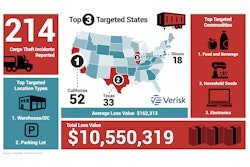While there have been no locally acquired cases of Zika virus anywhere in the U.S., 503 Americans have contracted the virus while traveling abroad. Unless you’re planning a trip to a Zika-infected area, you probably don’t have much to worry about, but it’s still good to get the facts.
Here’s what you need to know about the Zika Virus:
1. According to the Centers for Disease Control and Prevention (CDC), there have 503 travel-acquired cases of Zika in the United States, and 698 locally-acquired cases in United States territories. Before traveling or planning a trip, check to make sure your destination isn’t one of the infected countries and plan accordingly if it is. You can see the list of infected areas and travel recommendations, via the CDC, here.
2. Mosquitos spread Zika, and there is currently no preventative vaccine for the virus. Zika can also be sexually transmitted from a man to his partners. The CDC, on its Zika Virus page, says “once a person has been infected, he or she is likely to be protected from future infections.”
3. Pregnant women infected with Zika can pass the virus onto their fetus, according to the CDC. There is not a lot of definitive information on how the virus can affect a pregnancy and what defects it may or may not cause among babies, but Brazilian officials report an increased number of newborns with microcephaly corresponding with the country’s Zika outbreak.
4. Zika symptoms include conjunctivitis (pink eye), fever, rash and joint pain. According to the CDC, people rarely die of Zika and often their symptoms aren’t enough to prompt them to go to the hospital or seek treatment.
5. Zika virus was first discovered in 1947 in Uganda’s Zika Forest, and the first case of the virus in humans was reported in 1952.
6. The CDC says Zika virus “will likely continue to spread to new areas.” However, it’s difficult to predict where.
7. You can see how many people in your home state, or any states you may be traveling through, have been diagnosed with travel-acquired Zika virus. The CDC maintains a spreadsheet of confirmed diagnoses in each state and territory here.









